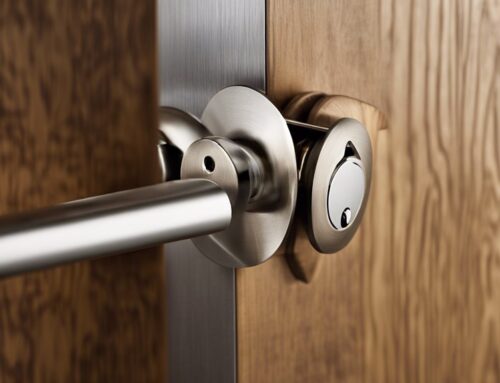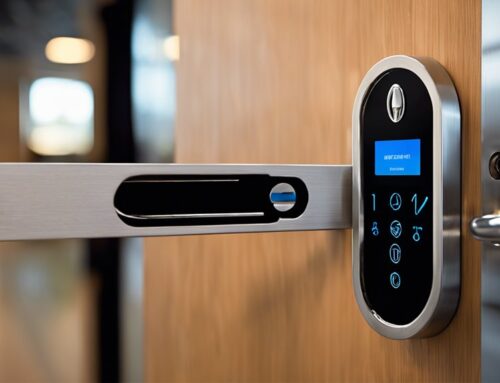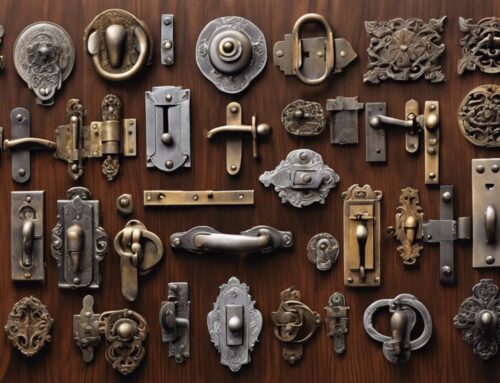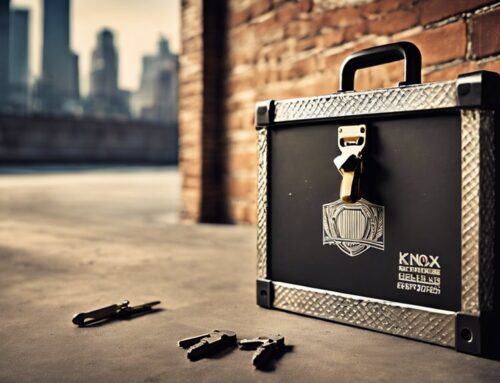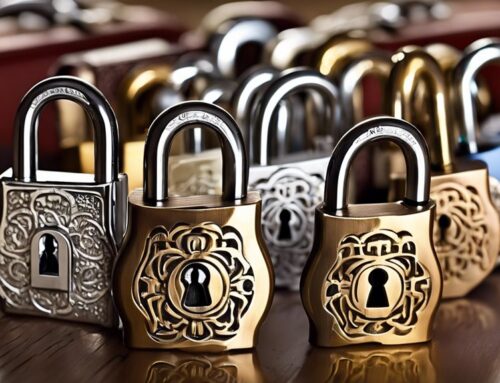[vc_row][vc_column][vc_custom_heading text=”High-Security Pin Tumbler Locks” font_container=”tag:h2|text_align:center|color:%23dd3333″][vc_column_text]A high-security lock is one that provides a high level of security to most types of attack, including drilling, sawing, wrenching, picking, and bumping. In most cases, such a lock will be Underwriters Laboratories (UL) listed and much more expensive than most locks. It will have two or more means of protection—such as hardened drill-resistant inserts, wards, side-bars, and patented keys. Medeco, ASSA, and Mul-T-Lock are a few brands of high-security locks. Figures 1.13 and 1.14 show two popular high-security keys.
Many lock manufacturers offer locks in several grades referred to as “light duty,” “residential,” “heavy duty,” and “commercial.” The grade descriptions are useful guidelines, but there are no industry standards for manufacturing each grade. One manufacturer’s heavy duty, for example, may be of lower quality than another manufacturer’s light duty. The grade names are meaningful only for comparing locks made by the same manufacturer.
A better measure of a lock’s quality is the rating given to it by the American National Standards Institute (ANSI).[/vc_column_text][/vc_column][/vc_row][vc_row][vc_column width=”2/3″][vc_single_image image=”2435″ img_size=”Full” style=”vc_box_border”][/vc_column][vc_column width=”1/3″][vc_column_text]Figure 1.13 A Medeco angu-larly bitted key.[/vc_column_text][/vc_column][/vc_row][vc_row][vc_column width=”2/3″][vc_single_image image=”2436″ img_size=”Full”][/vc_column][vc_column width=”1/3″][vc_column_text]Figure 1.14 A Mul-T-Lock dimple key.[/vc_column_text][/vc_column][/vc_row][vc_row][vc_column][vc_custom_heading text=”Picking the best High security Locks Check List”][vc_column_text]
- Bolt with at least one-inch throw.
- Bolt made of hardened steel or with hardened steel insert.
- UL listed.
- Builders Hardware Manufacturers Association (BHMA) Grade 1 or 2.
- Uses a patented key.
- Requires two or more actions to open (such as pins reaching the shear line at the same time a sidebar moves into place).
[/vc_column_text][/vc_column][/vc_row][vc_row][vc_column][vc_custom_heading text=”3 common ANSI standards for locks:”][vc_column_text]
- Grade 1 locks are for heavy-duty commercial uses and would be overkill for most homes.
- Grade 2 locks, although designed for light commercial uses, can provide good protection for most homes.
- Grade 3 locks are for light residential uses.
[/vc_column_text][/vc_column][/vc_row][vc_row][vc_column][vc_column_text]Most locks sold to homeowners are either Grade 3 or have no ANSI rating. Only a few manufacturers—such as Kwikset Corporation and Master Lock Company—offer lines of Grade 2 locks through department stores and home improvement centers. These ANSI-graded locks often cost little more than locks that have no ANSI classification.[/vc_column_text][/vc_column][/vc_row][vc_row][vc_column][vc_column_text]Should you sell a lock that doesn’t have an ANSI classification? Aside from the directions on how to install it and re-keying these locks you can’t rely on information the manufacturer has printed on the pack-aging.
Much of the description of the lock is just advertising hype. To be able to separate the hype from meaningful information, you need to rely on ANSI ratings and UL listings.
When someone comes to you to buy a lock, you need to educate them about such standards.[/vc_column_text][/vc_column][/vc_row]

